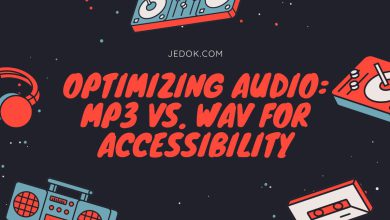
There’s never been a better time for a small business to go online than now. There are numerous advantages to doing so, including the ability to reach a much wider audience. There are many things that can be done to reach out to more consumers and keep existing customers, whether a business is already online or looking for ways to take advantage of the benefits provided by the digital world.
When it comes to the digital world, it’s important to remember that today’s devices come in a variety of shapes and sizes. Whether consumers are using a desktop computer with multiple monitors, a tiny smartphone with slow service, or something in between, planning an app or website requires enhancements to make it easier for them to use.
Consider the following suggestions when designing anything for customers to use to communicate with the company online.
1. Check to see if your website is mobile-friendly
To reach as many customers as possible, businesses must ensure that their websites are mobile-friendly. The type will be too small to read if a potential customer opens a website that looks exactly like it does on a desktop. Zooming in won’t help because you’ll have to scroll back and forth to read each line. Consumers will not do this; instead, they will return to the search that led them to the site and try a different one.
Rather, make sure that all pages are responsive, meaning that they adapt to the size of the screen for a better fit and easier reading. Working with iPhone app developers to create a progressive web app is even better (PWA). A progressive web app is a hybrid of a website and an application. It works on any device without the need to download an app, and you can save the website to your home screen for quick access.
2. Use AI Chatbots to your advantage
Artificial intelligence is rapidly evolving today, allowing it to be applied in a wide range of situations. Businesses can take advantage of this by implementing AI-powered chatbots. As customers converse with the chatbot, it is able to learn and cultivate more helpful responses. This allows for a more powerful interaction and can provide the necessary assistance without requiring the customer to speak with a live person. Of course, there should be the option to speak with a live person if necessary, but the chatbot will be able to answer most questions on its own, reducing the need for dedicated chat agents.
3. Make Mobile Pages Faster
Along with ensuring that websites can be viewed on mobile devices, ensure that they are also fast. Most customers will not wait long for a website to load, so the speed is critical. Almost half of all customers are willing to wait up to three seconds for a page to load. If it takes longer, the customer will look for what they require elsewhere. Investigate various methods for speeding up the loading of all pages, and test them on a regular basis to ensure that they continue to load quickly.
4. Improve the options for voice search
In recent years, consumers have become increasingly reliant on voice searches to find what they require. They can speak to a virtual assistant like Alexa or Siri rather than typing in what they’re looking for. When it comes to voice search, the way people phrase requests is more natural than the keyword-based phrases used when typing into a search engine, so this should be taken into account when optimizing.
5. Put your serverless architecture to the test
Servers are typically used to host all of the data required by an app or website, but serverless options are now available. Businesses may want to use serverless architecture to avoid overburdening their systems, reduce the risk of data loss, and lower development costs. Because serverless technology is cloud-based, it makes scaling a lot easier when it’s needed. When a website receives a lot of traffic, the bandwidth can be automatically increased to handle it. When the initial surge of interest fades, the bandwidth can be reduced to more reasonable levels.
6. Turn on the Dark Mode
Because screens are difficult on the eyes, a dark mode was created. Dark mode turns a website’s or app’s whitespace into a dark blue or black, removing the blue that can cause eye strain. This is especially important for users who may be viewing their devices at night because it is easier on the eyes and won’t keep them awake as long. Consumers can choose whether they want light or dark mode based on their own preferences or needs by adding a dark mode to the website or app.
7. Increase the level of native security
It’s difficult to imagine a hacker attempting to gain access to data created by small businesses, but it happens all the time. Because they don’t have as much security and still store private data that can be stolen and used, small businesses are frequently targeted by malware and other viruses. Increasing the app’s or website’s native security is a way to protect both the business and the customers, and it’s something that customers look for before making any online purchase. Take the time to review and improve native security features as much as possible to provide a more secure environment for customers.
More consumers are looking for what they need online than ever before, thanks to the growth of the internet and the need to shop online caused by the pandemic. Businesses that want to take advantage of this should keep up with the latest trends in order to connect with customers more easily and expand their reach. When developing a web app, keep these tips in mind to ensure that it is ready for users and contains everything they require.
Learn more from technology and read 4 Tips For Creating High-Quality Website Content.


